Explore Hai Phong - North Vietnam Travel, Asia
Hai Phong, known as the City of Red Flamboyant, blends coastal beauty, historical depth, and vibrant urban life. Sitting on Vietnam’s northeast coast, this dynamic port city opens the door to famous attractions like Cat Ba Island and Ha Long Bay. Stroll along tree-lined boulevards, admire French colonial architecture, or wander through bustling markets alive with local flavors.
Population: Approximately 2 million in 2022.
Economy: Hai Phong is one of Vietnam’s key economic hubs, driven by its strategic position as a major seaport in the north. The city’s economy thrives on shipping, logistics, shipbuilding, manufacturing, and fisheries. Tourism and hospitality also play a growing role, supported by Hải Phòng’s coastal attractions and cultural heritage.
Landmarks: Famous for the Ky Co Beach, Do Son Beach, and the Tam Bac Lake & Flower Street.
Vietnam
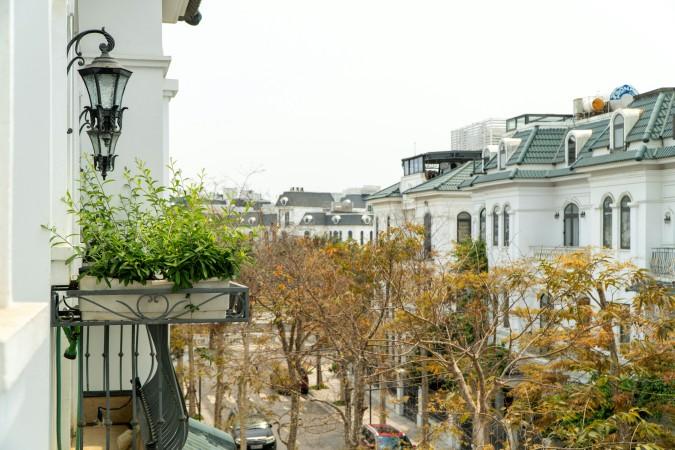
Overview of Hai Phong
History & Cultural Influence
Once a small fishing settlement along the Gulf of Tonkin, Hai Phong grew into a strategic maritime hub during the Nguyen Dynasty. Its natural harbor made it a vital link in Vietnam’s trade network, attracting merchants from China, Japan, and Europe. Today, grand buildings like the Hai Phong Opera House and the old post office showcase elegant European architecture. During Vietnam’s struggle for independence, the city became a key battleground, shaping its resilient spirit.
Interaction with The Locals
The people of Hai Phong are renowned for their genuine warmth and strong sense of community pride. Markets like Cat Bi and Lach Tray aren’t just places to shop but are stages for friendly conversations and lively bargaining. Joining locals for Banh da cua (crab noodle soup) at a street-side eatery is a simple way to connect with daily life in this city. Fishermen along the Do Son coast often welcome visitors with stories of life at sea.
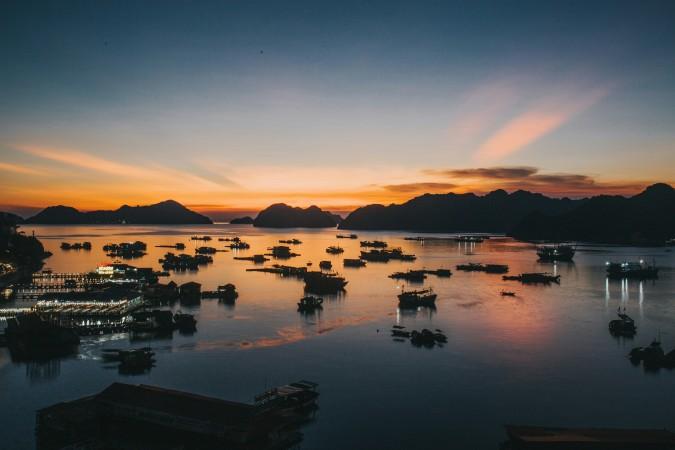
Top Attractions in Hai Phong
Cat Ba Island
A short ferry ride from Ben Binh Pier takes you to Cát Bà Island, the largest in the Cát Bà Archipelago. The island is home to Cat Ba National Park, where dense forests, limestone karsts, and hidden waterfalls create an explorer’s dream. Lan Ha Bay, with its quieter waters compared to Ha Long Bay, is perfect for kayaking between floating fishing villages and secluded beaches. Dive trips and boat tours let you discover vibrant marine life. After a day outdoors, unwind with fresh seafood by the harbor.
Do Son Beach
Only 22 km from downtown, Do Son Beach is a favorite weekend retreat for both locals and visitors. The coastline is divided into three main zones, each offering soft, sandy beaches and calm waters ideal for swimming. Try kite flying in the sea breeze, rent a banana boat for a splash of fun, or visit Ba Do Pagoda to learn about local spiritual traditions. If you arrive in September, you can witness the famous Buffalo Fighting Festival, a tradition that blends athletic competition with deep cultural meaning.
Hai Phong Opera House
Standing proudly in the city center, the Hai Phong Opera House was built in 1904 during the French colonial era. Its neoclassical facade, adorned with ornate columns and arched windows, hints at European grandeur. Inside, the theater still hosts concerts, plays, and cultural events. Even if you don’t attend a performance, the surrounding Opera Square is a pleasant place to enjoy a coffee and watch the city’s daily rhythm.
Tam Bac Lake & Flower Street
Tam Bac Lake is a peaceful retreat in the heart of the city, framed by walking paths and shaded benches. At night, the lake’s surface mirrors colorful lights from nearby buildings and bridges. Just a short walk away, Flower Street comes alive with floral displays, boutique shops, and open-air cafés. Musicians and street performers often set the mood, making this area perfect for an evening date or a relaxed family outing.
Du Hang Pagoda
Founded in the 17th century, Du Hang Pagoda is one of Hai Phong’s oldest Buddhist temples. Beyond its striking red-tiled roofs and intricately carved wooden beams, you’ll find peaceful courtyards lined with bonsai trees. Inside, ancient statues and ceremonial drums offer a glimpse into centuries-old spiritual practices. Visitors are welcome to join in quiet meditation or simply soak up the calm atmosphere far from the city’s noise.
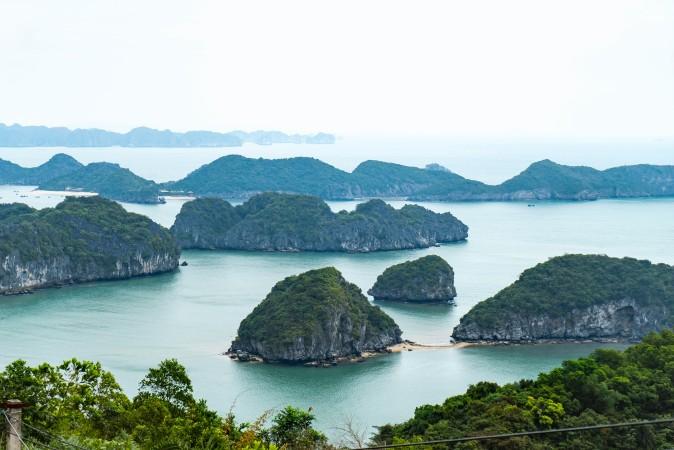
Must-Try Dishes in Hai Phong
- Bánh Đa Cua – Crab Noodle Soup: The pride of Hai Phong, 'Bánh đa cua' features chewy flat rice noodles in a rich crab-based broth. Topped with tender crab meat, fried tofu, water spinach, and a drizzle of red annatto oil, it’s served with fresh herbs and lime.
- Nem Cua Bể – Fried Crab Spring Rolls: Square-shaped and packed with crab meat, pork, mushrooms, and glass noodles, 'Nem cua bể' is wrapped in crispy rice paper and deep-fried until golden. Best enjoyed dipped in sweet-and-sour fish sauce with shredded papaya.
- Spicy Mini Baguette: This slim baguette is brushed with spicy chili sauce and pâté, then baked for extra crispiness. Found at small roadside stalls, it’s the ultimate grab-and-go snack, often paired with iced tea.
- Sweet Winter Dessert: Glutinous rice dumplings filled with sweet mung bean paste, served in hot ginger syrup, and topped with roasted sesame seeds — a comforting treat on chilly evenings.
- Spicy Fish Noodle Soup: A fiery specialty, this dish combines fried fish fillets, chewy noodles, and a tangy tomato-based broth spiced with chili. It’s hearty, flavorful, and perfect for spice lovers.
- Stir-Fried Spoon Clams: Unique to Hai Phong, spoon clams are small, spoon-shaped clams stir-fried with lemongrass, garlic, and chili. The shells are small, but the meat is sweet and packed with flavor.
- Freshwater Crab Hotpot: A local gathering favorite, this hotpot dish features a bubbling broth made from field crab paste, tomatoes, and tamarind. Served with beef, tofu, mushrooms, and a basket of fresh vegetables, it’s both tangy and rich.
- Young Coconut Sweet Soup: This refreshing dessert combines jelly-like young coconut flesh with pandan jelly, sago pearls, and creamy coconut milk. Served over crushed ice, it’s perfect on a hot Hai Phong afternoon.

Festivals & Local Celebrations
Red Flamboyant Flower Festival
Held every May, the Red Flamboyant Flower Festival celebrates Hai Phong’s symbol — the bright red flamboyant blossoms that line its streets. Expect parades, art performances, boat races, and street music. The entire city transforms into a stage, with petals falling like confetti. It’s both a cultural showcase and the unofficial start of summer in Hai Phong.
Do Son Buffalo Fighting Festival
Every September, Do Son hosts one of Vietnam’s most unique and thrilling events, the Buffalo Fighting Festival. Dating back hundreds of years, it honors the Water God and wishes for calm seas and bountiful harvests. The atmosphere is electric, with drums, cheering crowds, and the clash of powerful buffalo in the arena.
Lunar New Year
Tết in Hải Phòng is a warm blend of family reunions, ancestral worship, and street festivities. Markets brim with kumquat trees, red decorations, and traditional foods like bánh chưng. Visitors are often welcomed into homes to share meals and join in the holiday cheer.
Mid-Autumn Festival
Celebrated on the 15th day of the eighth lunar month, Mid-Autumn Festival is a magical night for children and adults alike. The streets light up with lantern processions, lion dances, and mooncakes. Public squares often host performances, making it a wonderful time for evening strolls.
Fishing Village Festivals
Along the Do Son coast and Cat Ba Island, fishing villages hold smaller festivals to pray for safe voyages and good catches. These gatherings feature boat parades, folk singing, and seafood feasts, a genuine window into Hai Phong’s maritime culture.
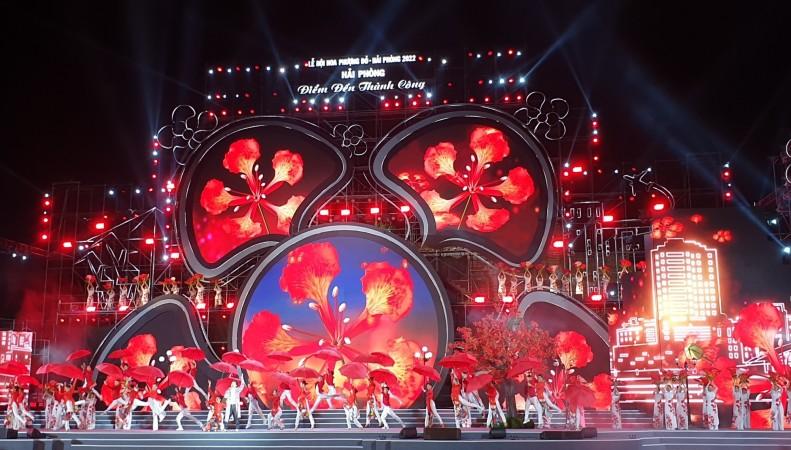
What to Do in Hai Phong
- Island Hopping in Lan Ha Bay and Cat Ba: Hop on a boat from Ben Binh Pier to explore Lan Ha Bay’s emerald waters and limestone cliffs. Kayak through hidden lagoons, visit floating fishing villages, and swim at secluded beaches.
- Trekking in Cat Ba National Park: For nature lovers, Cat Ba National Park offers trails ranging from easy walks to challenging hikes. Along the way, you might spot langurs, tropical birds, and panoramic viewpoints over the bay.
- Beach Time at Do Son: Spend a lazy day swimming, sunbathing, or renting a beach umbrella. Try water sports like banana boating or jet skiing for a more active afternoon.
- Evening Stroll at Tam Bac Lake: Enjoy the cool evening air as you walk around Tam Bạc Lake. Stop for street snacks, listen to live music, or take photos under the glowing street lights.
- Join a Cooking Class: Learn how to make Hai Phong’s specialties from local chefs. These hands-on workshops often include market visits, giving you a deeper taste of Hai Phong’s life.
- Night Market Hopping: Visit Cat Bi Market or Hai Phong Night Market to sample street food, shop for souvenirs, and soak in the city’s buzzing nightlife.
Shopping in Hai Phong
- Cat Bi Market: Bustling and colorful, Cat Bi Market is the place to find everything from fresh produce to dried seafood. Bargaining is expected and part of the fun.
- Lach Tray Street Shops: This lively street is lined with fashion boutiques, sportswear stores, and casual eateries. It’s ideal for picking up affordable clothing and accessories.
- Pearl Jewelry and Shell Crafts: Thanks to the city’s coastal setting, pearl jewelry and shell-based handicrafts are popular souvenirs. Many shops near the harbor sell locally made items at reasonable prices.
- Hai Phong Night Market: Open until late, this market blends food stalls with souvenir vendors. Try many of Hai Phong’s street foods while browsing for gifts like lacquerware or embroidered scarves.
- Specialty Food Stores: Pick up jars of shrimp paste, packages of dried squid, or boxes of sủi dìn mix to take home a taste of Hai Phong.
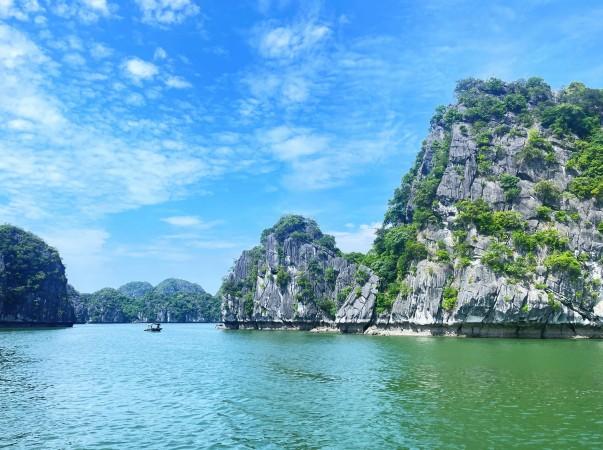
Weather in Hai Phong: Best Time to Visit
- Spring (March – April): Spring is mild, with average temperatures between 20–25°C (68–77°F). Flowers bloom across the city, making it a lovely time for sightseeing and outdoor festivals like the Red Flamboyant Flower Festival. Light jackets are enough for cooler evenings.
- Summer (May – August): Summer brings hot, humid days and occasional heavy rains. Temperatures often reach 30–35°C (86–95°F). This is beach season in Đồ Sơn and the peak for island trips to Cat Ba and Lan Ha Bay. Carry sunscreen, hats, and water, and expect afternoon showers.
- Autumn (September – November): Autumn is a traveler’s favorite, with cooler air (23–28°C / 73–82°F) and clearer skies. It’s perfect for trekking in Cat Ba National Park or enjoying seafood without the summer crowds.
- Winter (December – February): Winters are cool and misty, with temperatures around 15–20°C (59–68°F). While too chilly for swimming, it’s a cozy time to enjoy hotpots and other sweet desserts of Hai Phong. Pack warm layers, especially for evenings by the sea.
Weather Tips for Tourists:
Typhoons can occur from July to September, occasionally affecting ferry services to Cat Ba. Check local weather updates before planning boat trips.
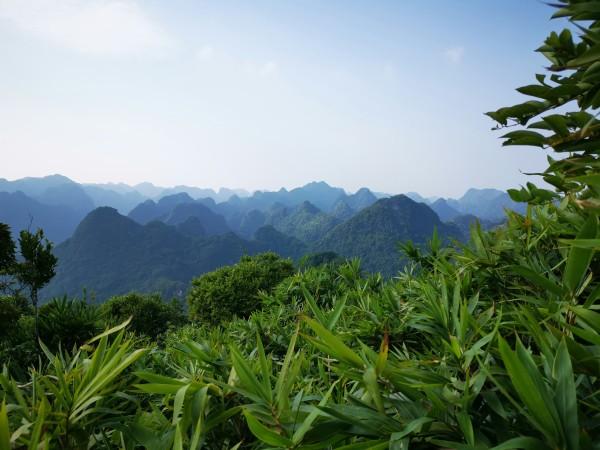
Essential Travel Information
Getting Around Hai Phong
- Taxis and Ride-Hailing Apps: Traditional taxis are widely available, but for added convenience, consider using apps like Grab or Be to book rides at fixed prices.
- Motorbike Rentals: Renting a motorbike gives you flexibility, especially for trips to Do Son or Cat Ba. Always wear a helmet and carry your driver’s license.
- Public Buses: Local buses connect central Hai Phong with suburban areas and ferry terminals. They’re cheap but require some patience with schedules.
- Bicycle Rentals: Perfect for a leisurely ride along Tam Bac Lake or exploring small alleys. Many hotels offer hourly or daily rentals.
- Ferries and Speedboats: Ferries and speedboats run from Ben Binh Pier and Dinh Vu Port to Cat Ba Island and nearby bays. In peak season, book in advance.
- Train and Long-Distance Bus Connections: Hai Phong’s train station offers daily trips to Hanoi, while long-distance buses connect to destinations like Ha Long Bay and Ninh Binh.
ATM & Banking Services
- ATM Availability: ATMs are found in city centers, shopping malls, and near popular tourist areas like Cat Ba ferry terminals. Machines from major banks such as Vietcombank, BIDV, and Techcombank accept international cards (Visa, Mastercard).
- Withdrawal Limits and Fees: Most ATMs have a withdrawal limit of 2–5 million VND per transaction. Foreign card fees vary, so check with your bank before traveling.
- Currency Exchange: Money changers and bank branches offer currency exchange services. For the best rates, visit official banks rather than small kiosks.
- Card Payments: Credit and debit cards are accepted at hotels, restaurants, and major stores. Smaller shops and street vendors prefer cash.
Where to Stay in Hai Phong
- Luxury Hotels: For travelers seeking comfort and elegance, Hai Phong’s luxury hotels offer spacious rooms, high-end amenities, fine dining, and wellness facilities. Many feature panoramic views of the city or the coastline, perfect for a relaxing retreat.
- Mid-Range Hotels: Mid-range options balance comfort and value. You can expect well-furnished rooms, attentive service, and central locations that make sightseeing easy. Ideal for couples, families, and business travelers.
- Beach Resorts: Beach resorts along Do Son Beach offer direct access to sandy shores, swimming pools, and fresh seafood restaurants. Perfect for travelers looking to combine relaxation with coastal activities.
- Homestays and Local Experiences: Staying in a homestay lets you experience authentic Vietnamese life. You’ll enjoy home-cooked meals, cultural exchanges, and a warm family atmosphere, often in fishing villages or rural areas near Cat Ba Island.
Articles for you

Explore Yala National Park - Sri Lanka Travel, Asia
Tucked away in Sri Lanka’s southeastern corner, Yala National Park is where wild nature meets deep tradition. Known worldwide for its leopard population, the park is also home to elephants, sloth bears, crocodiles, and hundreds of bird species. Beyond wildlife, Yala opens doors to a cultural landscape dotted with ancient temples, Buddhist ruins, and coastal villages. For travelers seeking more than just a safari, Yala offers a chance to explore eco-tourism, local communities, and sacred heritage sites.
Population: The Yala National Park area doesn’t have a human population.
Economy: The economy around Yala National Park thrives on a blend of eco-tourism, agriculture, and local services. Safari tours, eco-lodges, and cultural experiences drive steady income for nearby towns like Tissamaharama and Kataragama, supporting thousands of families.
Landmarks: Famous for Block I of Yala and wildlife encounters, including elephants, sloth bears, crocodiles, and exotic bird species.

Explore Galle - Sri Lanka Travel, Asia
Nestled on Sri Lanka’s southern coastline, Galle is a vibrant city where history meets the sea. Its cobbled streets, colonial architecture, and serene beaches make it a must-visit destination for travelers seeking a blend of culture, adventure, and relaxation. A UNESCO World Heritage site, Galle captivates visitors with its Dutch Fort, bustling markets, and friendly locals. Whether you’re exploring the ramparts at sunset or savoring fresh seafood by the shore, Galle promises an unforgettable journey into Sri Lanka’s heritage.
Population: Approximately 113,000 in 2023.
Economy: Galle’s economy thrives on tourism, trade, and fisheries. The city’s historic fort, colonial architecture, and coastal charm draw thousands of international visitors each year, making tourism its main economic driver. Fishing remains vital for local livelihoods, supplying fresh seafood across the region.
Landmarks: Famous for the Galle Fort, Dutch Reformed Church & Maritime Museum, and Unawatuna Beach.

Explore Bentota - Sri Lanka Travel, Asia
Nestled along Sri Lanka’s southwestern coast, Bentota is a tropical paradise that blends golden beaches, vibrant culture, and thrilling adventures. Famous for its calm waters, luxury resorts, and scenic river estuary, Bentota has become a top destination for travelers seeking both relaxation and authentic experiences. From serene beach walks at sunrise to adrenaline-pumping water sports, this coastal town offers a perfect balance of leisure and exploration. With its proximity to Colombo and Galle, Bentota is easy to reach, making it an ideal stop for both short escapes and extended holidays.
Population: Approximately 37,000 in 2023.
Economy: Bentota’s economy thrives mainly on tourism, which drives local businesses such as hotels, restaurants, and wellness retreats. The town also benefits from fishing, coconut cultivation, and handicrafts like wood carving and batik textiles. Many residents rely on the growing demand for water sports and Ayurvedic treatments, making tourism the backbone of both income and employment in the area.
Landmarks: Famous for Bentota Beach, Bentota River Safari, and Kande Vihara Temple.

Explore Mirissa - Sri Lanka Travel, Asia
Mirissa is a charming coastal town on Sri Lanka’s southern shoreline. Known for its golden beaches, turquoise waters, and vibrant marine life, it has become a must-visit stop for travelers exploring the island. Many come for whale watching, surfing, and sunset views at Coconut Tree Hill, but Mirissa offers much more than postcard beauty. The fishing boats you see anchored by the bay carry generations of stories. Local traditions, delicious cuisine, and a laid-back rhythm of life shape every visitor’s experience.
Population: Approximately 4,700 in 2023.
Economy: Mirissa’s economy is largely shaped by its coastal location. Fishing has long been the backbone of local livelihoods, with generations relying on the Indian Ocean for income. In recent decades, tourism has become the main driver of growth, thanks to whale watching, surfing, and beachside hospitality.
Landmarks: Famous for Mirissa Beach, Coconut Tree Hill, and Parrot Rock Bridge.

Explore Nuwara Eliya - Sri Lanka Travel, Asia
Tucked away in the Central Highlands of Sri Lanka, Nuwara Eliya is often called “Little England”. With its rolling tea plantations, cool misty mornings, and colonial charm, this mountain town feels like a step into another world. Travelers come here to breathe fresh air, walk through flower gardens, sip the finest Ceylon Tea, and enjoy a pace of life far from the island’s busy cities. Whether you’re drawn by scenic landscapes, heritage architecture, or the warmth of its people, Nuwara Eliya is a destination that blends nature, culture, and history in perfect harmony.
Population: Approximately 781,000 in 2023.
Economy: Nuwara Eliya’s economy thrives mainly on tea production, as it sits in the heart of Sri Lanka’s central highlands, famous worldwide for Ceylon Tea. The city also benefits from a growing tourism industry, attracting visitors with its colonial charm, cool climate, and scenic landscapes.
Landmarks: Famous for Gregory Lake, Hakgala Botanical Garden, and Victoria Park.

Explore Sukau - Malaysia Travel, Asia
Nestled on the banks of the Kinabatangan River in Sabah, Malaysian Borneo, Sukau is a destination where wildlife, culture, and conservation come together. Known as one of Asia’s top spots for river safaris and eco-tourism, this quiet village offers a front-row seat to encounters with Bornean orangutans, pygmy elephants, proboscis monkeys, and exotic birdlife.
Population: Approximately 1,400 in 2019.
Economy: Sukau’s economy is shaped by its riverine location and natural resources. Traditionally, the Orang Sungai community relied on fishing, small-scale farming, and forest gathering for their livelihood. Today, the village has shifted toward eco-tourism, with river cruises, jungle trekking, and homestays providing income.
Landmarks: Famous for the Kinabatangan River cruises, Gomantong Caves, and Ox-bow lakes and wetlands.
